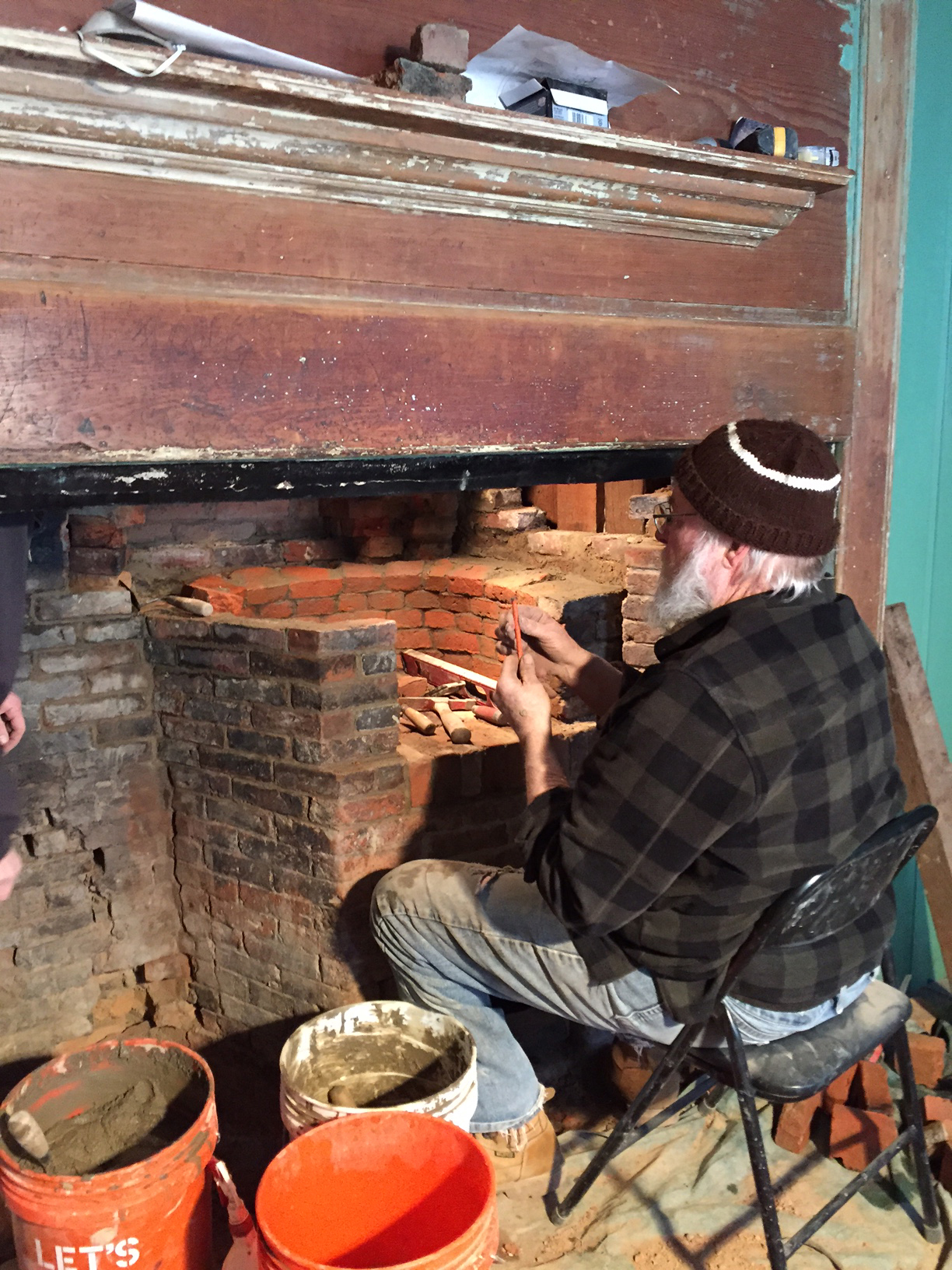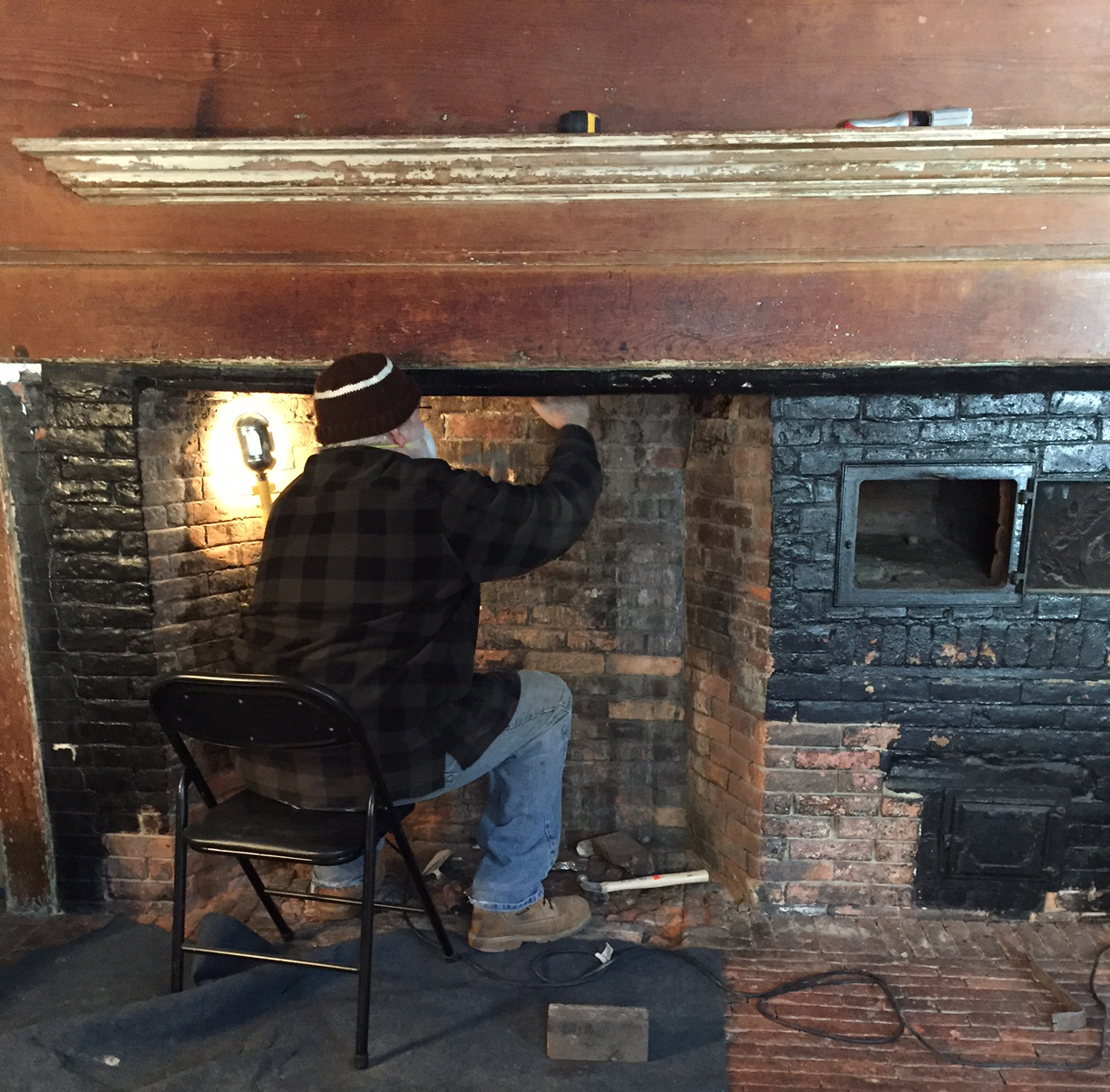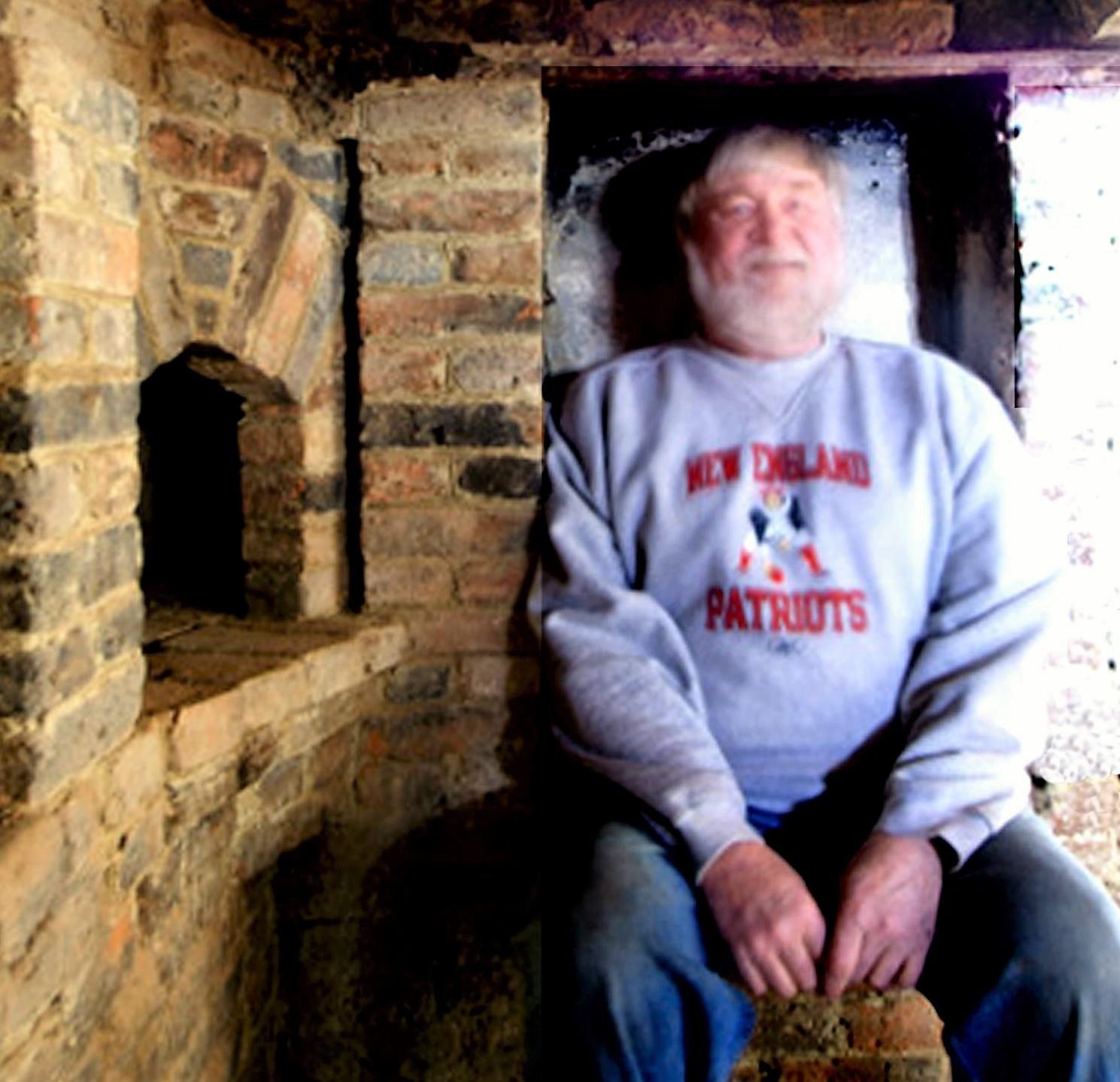Q&A:
Richard Irons
Restoration Masons
Limerick, Maine
Richard Irons, 70, of Limerick, Maine, described as one of the best restoration masons in America, has worked on historic houses and museum properties in the northeastern United States for more than 40 years. During that time Mr. Irons has uncovered hundreds of fireplaces, bake ovens, set kettles, and meat smokers for clients, while restoring forgotten practices of the mason’s craft. His projects have included rebuilding five chimneys on Nathaniel Hawthorne’s House of Seven Gables in Salem, Mass.; repointing the Longfellow House in Portland, Maine; consulting on the 19th-century baking ovens at Fort Knox on Maine’s Penobscot River; repairing the stone foundation of Lowell’s Boat Shop in Amesbury, Mass., and rebuilding a cooking fireplace and oven at Sturbridge Village in Massachusetts. Two of Mr. Irons’ sons, Rick and Mike, are accomplished masons, as well. He and his wife, Linda, have seven children in all, and split their time between a lake house on Arrowhead Lake and a circa-1805 Federal-style farmhouse in Limerick. Mr. Irons spoke recently with Antique Homes Magazine.

Q. What are some tips you’d offer on care of an antique chimney?
A. There are a lot of misconceptions on what you have to do with old masonry. A lot of people talk to chimney sweeps and people that do the liner systems (who tell) them, by law, they have to update and have these things lined in some fashion, which is not really a fact. Most can be grandfathered. Certainly any furnace or woodstove or appliance that’s brought into an unlined chimney must be lined from bottom to top.
The other thing a lot of people don’t know is, there is a separate building code for old houses, the Secretary of the Interior’s Standards for Preservation, which if you can apply it, is wonderful. You do need some sort of historic designation, whether from the National Historic Register (or state or local historic commissions). If any entity has blessed the house as a historic home, you can exempt yourself from the modern-day building code, which is wonderful thing.
Q. What’s the risk you face if you don’t pay attention to your old chimney? Are you going to lose a lot of energy? Is your house going to burn to the ground?
A. Heat is not usually the enemy of old masonry — water is, and freeze-thaw cycles in New England. Neglected unused chimneys — when these were heating houses 200 years ago, the flues were kept dry, there was an updraft, rain was either diverted or evaporated. When you start to get brickwork decomposing and mortar eroding, it’s generally from disuse.
In a center chimney you have five separate flues. A lot of the partitions dividing the flues collapse first — they’re often the first thing to go because of freeze-thaw. You can pretty much say that every separate fireplace has its own separate flue.
As far as having a structure fire relating to chimneys, old chimneys and fireplaces sometimes get blamed, but it’s almost entirely related to wood stoves being introduced into flues. That can be back in 1840: Maybe you’ve seen holes cut in paneled walls — they often just hooked a stove pipe almost blind into the chimney. I do a lot of historic lecturing and slideshows so I have the most horrible pictures of open holes being stuffed with oily rags, newspaper, or a pie plate or almost nothing.

And then (there are) the modern day wood stoves that have been introduced into a large flue. Say a wood stove takes a six-inch flue and you stuff it into a fireplace that has a 12- or a 14-inch flue. The emissions are not going to stay as gas to get out of the chimney, they’re going to cool and stick to the inside of your chimney. That is when you get a whole lot of accumulation of creosote. A wood stove will create a whole lot more creosote than a regular wood-burning fireplace. Sometimes they’ll have a bad chimney fire by not having that cleaned or checked out.
Generally a chimney fire, although a very scary thing, will stay within the chimney. But what you really want to inspect is the exterior walls of the chimney. If the masonry abuts or touches or has wood embedded into it, that can get so hot it can combust without spark and flame transferring out.
I am very much anti-woodstoves (being put) into flues that are meant for fireplaces.
Q: People with old homes will find little chambers or rooms off the chimneys that make for great legends: they were hiding places during Indian attacks or on the Underground Railroad. What were they actually used for?
A: Yup. The last couple of jobs I did we used these unused spaces to introduce central heating. Sometimes you see this niche big enough for a couple people as you’re going down the cellar stairs. In the very center of a large center chimney there is generally a hollow void — sometimes they do actually have a wooden roof, some have been converted to meat smokers. I’ve been in things I could envision as a miniature Egyptian pyramid — you could get four or five guys in there.
Sometimes I’ve made secret vaults or hidey-holes for people by accessing one of these chambers secretively behind raised panels or a brick patch. Some have a function of being warm, dry storage. They’re surrounded by masonry.
As for the Underground Railroad stories, I have seen some of these that did have a hatch access. It could be. You find mouse remains but I’ve never found any sign of human habitation. I have seen a large enough chamber where you could get a family in there.
We have occasionally found a time capsule that has been left by past people to find. I found a couple of really nice redware jugs one time. Some silverware and utensils. One neat thing, when I redid an inner hearth, laid in the nice fine sand under the brickwork were three different pipe bowls, clay pipes, all different styles and designs on them, laid neatly in a row. A previous mason doing the hearth laid them in there. I called it a present from the past.
Q. What is the most challenging job you have tackled?
A. I would say building a beehive-shaped bake oven, as far as the height of technicality. You see some beautiful ones. I would say most masons of the past were better than modern-day masons. Building bake ovens is a lost art. We commonly do them. I do try to match materials almost exactly — I have a large storehouse of various aged brick shapes and sizes.
(I love) starting a fire in a bake oven that I resurrected that hasn’t been used for a hundred years. I love getting people to reuse the bake ovens, even if they’re just going to do pizzas and stuff.
 Q. What is the most memorable job you’ve had, or your favorite job?
Q. What is the most memorable job you’ve had, or your favorite job?
A. The older the better, I guess, as far as what I really like to do. We redid the fancy chimneys on the House of Seven Gables in Salem and I really enjoyed working there a lot. That’s one of the most visited houses in the country. That’s high on my list of jobs.
(There is a) picture of me sitting in a chimney seat, like an English Inglenook, we discovered that in a house in Ipswich. They were common in the 1600s and 1700s in England. The one in Ipswich was probably 1730 or so. I’ve been doing this for 40 years, and this is the only Inglenook I’ve seen reproduced in America. That’s really a special feature.
— Mark Sullivan



